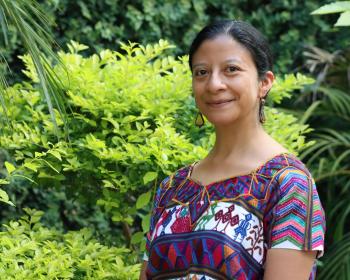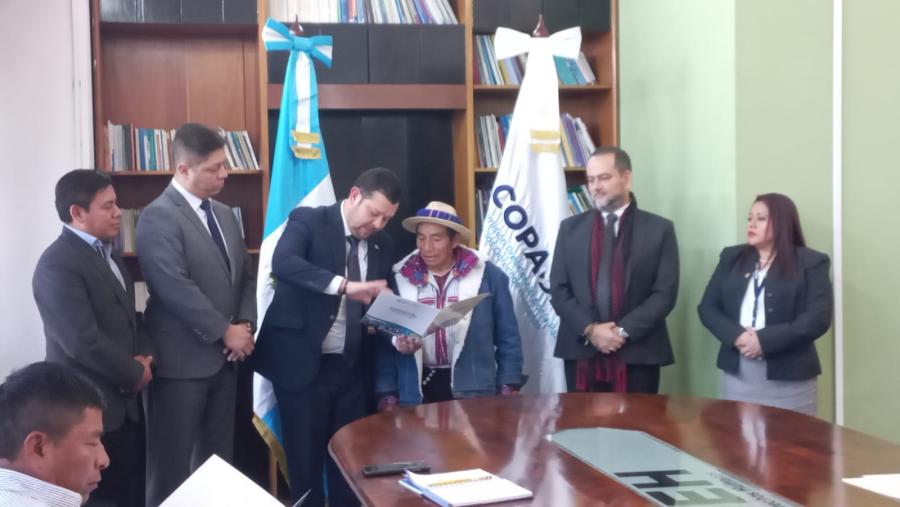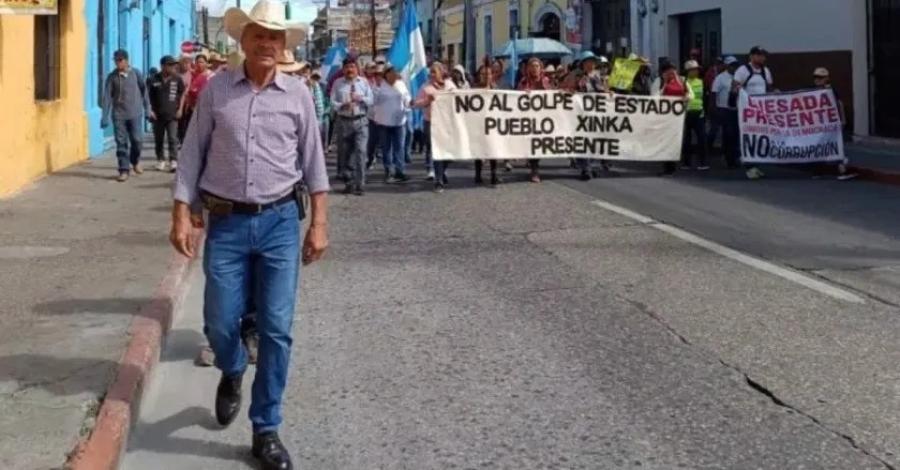
On November 26, 2006, more than 20 people met in Chuicaxtún, Canton Chivax, Totonicapán, Guatemala, to create the project of Community Radio La Niña 88.5 FM. Without any prior technical knowledge of radio broadcasting, production, programming, administration, or how to install a transmitter, we took our first steps in community communication.
Our idea of developing our community was to have a radio station that would bring information to the population. We wanted to reach the hearts and minds of our brothers and sisters who walk through our fields, who sow the land, who raise cattle and chickens. We wanted to speak in the ear of that population that cuts firewood, that weaves dreams with the hoe, to the river that runs and the wind that blows, that listens to the marimba, the son (traditional music) in our language, which is the inspiration of our grandparents.
In the midst of the yellow, white, and Mex' corn recently harvested and sunning on the roofs of the houses of the families in the first frosts of western Guatemala, the signal of the radio station began. Little by little, the neighbors came to the radio station to donate music they wanted to listen to on the radio. Some made a symbolic economic contribution and others gave recommendations and advice to the founders of this project.
Most of the people who started this process did not have access to school; some had only reached the third grade. However, this was not an obstacle since the community mayor's office had already endorsed the project together with the adults, boys, girls, and young men and women of the community. A neighbor provided a console, microphone, notebooks, and pens. With the arrival of mobile phones in our country we acquired the first cell tower, which allowed us to get closer to the audience by receiving communication from our brothers and sisters in the communities.
Alternative and Commercial Media
We heard from members of our community that during the Civil War in Guatemala that lasted approximately 36 years, there was a radio station that served the population, but disappeared after the signing of the peace agreement in 1996: "Estéreo Popular" was the name of this radio station. Ten years after its disappearance, in 2006, we organized a new community station ourselves. We were full of hope and thousands of dreams, and after completing our journeys in the field, preparing the land, weaving, and collecting and storing corn husks, we moved forward to pursue community communication.
As our work deepened, we understood that the commercial media have among their purpose to make the population consumerist, in addition to having partisan political interests. Even though seemingly benign sports programs, news, cultural, religious, and musical programs, they seek to dominate and exterminate Indigenous Peoples under racist and discriminatory parameters so that Indigenous Peoples do not feel proud of their roots, traditions, and customs.
Community Media
Our dream within the collective was to have our own outlet for communication to talk about our social, economic, political, and cultural reality without favoring groups with interests of exploiting our rivers, lakes, and lagoons or logging our timber. Today, we want the entire population to improve their living conditions and move forward, to return to school and finish their studies to achieve the true progress that Guatemala needs—but that requires a lot of work, effort, and time.
Internally, we reflect on how we would like to take up again what our sacred book the “Popol Wuj” says: "That not one or two be left behind the others." We want the voices of our brothers to be heard in their language, that on the radio frequency we can transmit our great traditions, that we can describe the marvels of our looms and our weavings, that we can narrate when the moon comes back to life.
Little by little, the collective of Radio La Niña has woven the objectives of the station to bring information that changes minds. We want to educate and allow family growth. Unlike the commercial radio stations, we don't accept political favors or paid advertising that damages the community, making them believe in a certain political party or to blindly trust the government or believe in false promises. That only favors the interests of the ruling class which always wants to have a country on its knees.
Criminalization of La Niña Community Radio
During more than 15 years of broadcasting, Radio La Niña has been the target of four direct attacks aimed at shutting down our transmission, as well as prosecution by the Public Ministry for not having a governmental license and criticizing political groups. However, the support of our community and the 48 cantones of Totonicapán have allowed us to resist and have given us recognition as a true community radio station, which is a space that we have earned together with community leaders, people who support us and recognize our trajectory and contribution to the community.
This support is a product of the work, effort, and accompaniment that the station has given to the community. It is reflected in our campaigns for the empowerment of women, educational programs directed by and for our campesino brothers and sisters, as well as support for young people in the promotion of new knowledge. From the beginning, we demanded from the State the fulfillment of the Peace Accords, the Constitution of the Republic of Guatemala, and the rights of Indigenous Peoples, especially regarding freedom of expression and access to the media as established in international conventions and treaties that have been ratified in the country.
We hope to find like-minded people along the way to continue improving Guatemala. Today, with our work, we achieve for our community what was accomplished in 1969 on the moon: “one small step for man, one giant leap for mankind."
In 2021, Radio La Niña received a grant from the Indigenous Community Media Fund which provides opportunities for international Indigenous radio stations to strengthen their infrastructure and broadcast systems and creates training opportunities for journalism, broadcasting, audio editing, technical skills, and more for radio journalists from Indigenous communities around the world. In 2022, the Indigenous Community Media Fund supported communities with 23 grants totaling $138,000 to Indigenous community media outlets from 13 countries.
--Concepción Ajanel (Maya K'iche') is Director of Community Radio la Niña.
Top photo: Booth of Radio la Niña



